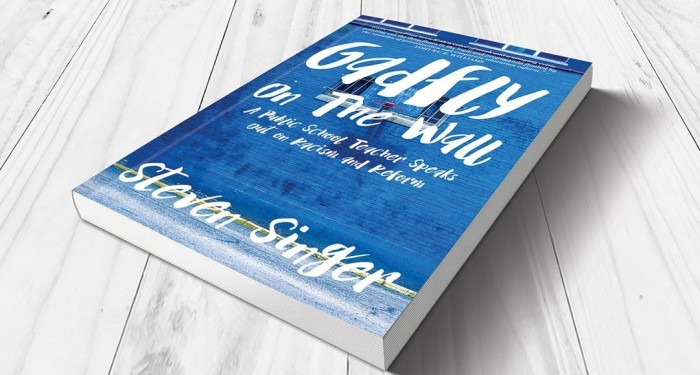
Can you feel it?
The primary election is just a few weeks away.
Voters will decide all kinds of things like who will represent their respective parties for school board, judges, magistrates, county council, etc.
However, that’s not all.
There also will be four statewide ballot initiatives. All Allegheny County residents will get a fifth. And Pittsburgh residents will get a sixth.
If you’re like me, you don’t want these questions to come as a surprise on May 18 or before (if you’re casting a mail in ballot).
These queries can change the state for better or worse in dramatic ways, yet for some reason, they don’t write these things in the way everyday people talk.
This is lawyer speak. You have to wear a long black robe and put on a white haired wig (called a peruke) just to understand these things.
But don’t get your gavel in a tizzy.
As a public service, I’m going to translate each question and make a suggestion on how you should vote.
QUESTION 1:
“Shall the Pennsylvania Constitution be amended to change existing law and increase the power of the General Assembly to unilaterally terminate or extend a disaster emergency declaration—and the powers of Commonwealth agencies to address the disaster regardless of its severity pursuant to that declaration—through passing a concurrent resolution by simple majority, thereby removing the existing check and balance of presenting a resolution to the Governor for approval or disapproval?”
Translation: Allow the legislature to second guess the governor and terminate an emergency disaster declaration without just cause
Suggestion: VOTE NO
This is yet another example of the endless far right hissy fit from science denying lawmakers still mad that Gov. Tom Wolf had the gall to close down the state because of the global Covid-19 pandemic. If passed, this would erode the powers of the governor and give them to our gerrymandered Harrisburg legislature.
We have three branches of government for a reason – checks and balances. Robbing the executive to boost a dysfunctional legislature would make the declaration of emergencies and natural disasters a matter or politics not facts.
Emergencies could be terminated at a moment’s notice without cause sending our first responders into chaos. Emergency managers could lose precious time and resources, communities could lose relief and recovery funding from the state and federal governments, all while our chuckleheaded legislature debates reality.
The Covid-19 pandemic may not be over yet. We’re working overtime to distribute vaccines and combat threats from emerging variants. The last thing we need is a political show prematurely eliminating masking, social distancing and other safety precautions so performative ideologues can win points on Fox News.
QUESTION 2:
“Shall the Pennsylvania Constitution be amended to change existing law so that: a disaster emergency declaration will expire automatically after 21 days, regardless of the severity of the emergency, unless the General Assembly takes action to extend the disaster emergency; the Governor may not declare a new disaster emergency to respond to the dangers facing the Commonwealth unless the General Assembly passes a concurrent resolution; the General Assembly enacts new laws for disaster management?”
Translation: Limit an emergency disaster declaration to 21 days regardless of the severity of the emergency
Suggestion: VOTE NO
Disasters do not come with time limits. But randomly limiting them all to 21 days again takes power away from the Governor and gives it to the legislature. The only way to extend emergency declarations would be passage of a resolution by the state House and Senate.
Do we really want our emergency responses tied to the endless back and forth of legislators who rarely even pass their annual budgets on time? This is unnecessary bureaucracy so politicians can grandstand while emergency personnel wait for the go ahead to save lives.
QUESTION 3:
“Shall the Pennsylvania Constitution be amended by adding a new section providing that equality of rights under the law shall not be denied or abridged because of an individual’s race or ethnicity?”
Translation: Make it illegal to deny or cut short anyone’s rights because of race or ethnicity
Suggestion: VOTE YES
This should be a no brainer. No one should be able to deny a person’s civil rights because of race or ethnicity. Or any other reason!
However, we just lived through four years of a reality TV show President who packed the federal courts with dozens of questionable and unqualified judges who made their careers discriminating against people of color, people of different creeds, religions, etc.
So it makes sense to enshrine equal protection for all at the state level and protect Commonwealth residents from federally sanctioned prejudice especially focused around workers’ rights, criminal justice reform, housing and healthcare.
Moreover, as a part of the state Constitution, this amendment would stop even our own state legislature from passing any laws inconsistent with it.
QUESTION 4:
“Do you favor expanding the use of the indebtedness authorized under the referendum for loans to volunteer fire companies, volunteer ambulance services and volunteer rescue squads under 35 PA.C.S. §7378.1 (related to referendum for additional indebtedness) to include loans to municipal fire departments or companies that provide services through paid personnel and emergency medical services companies for the purpose of establishing and modernizing facilities to house apparatus equipment, ambulances and rescue vehicles, and for purchasing apparatus equipment, ambulances and rescue vehicles, protective and communications equipment and any other accessory equipment necessary for the proper performance of the duties of the fire companies and emergency medical services companies?”
Translation: Allow municipal fire departments and EMS companies to apply for state loans to modernize critical safety equipment
Suggestion: VOTE YES
Both municipal fire departments and EMS companies with paid employees and volunteer departments and companies would be able to apply for state loans.
This vital funding could be used to modernize or purchase necessary safety equipment for first responders. It would keep fire fighters up to date and able to serve residents – especially those in rural areas. It would make sure every fire department could have up to date equipment.
Question 5 (Allegheny County Only):
“Shall the Allegheny County Code, Chapter 205. Allegheny County Jail, be amended and supplemented to include a new Article III, as set forth below, which shall set forth standards governing conditions of confinement in the Allegheny County Jail?”
Translation: Should we prohibit solitary confinement at Allegheny County Jail except in extreme emergencies?
Suggestion: VOTE YES!
Solitary confinement is cruel and unusual punishment. A lawsuit filed in September by ACJ inmates alleges that solitary confinement was being used as a punishment against inmates seeking mental health care. Recent research from Cornell University demonstrates that even a short amount of time in solitary confinement can increase recidivism rates, as well as unemployment rates.
Question 6 (Pittsburgh residents only):
“Shall the Pittsburgh Home Rule Charter be amended and supplemented by adding a new Article 10: Powers of the Pittsburgh Police, containing Section 1001, which shall bar employees of the Pittsburgh Bureau of Police from executing warrants at any residence without knocking and announcing themselves?”
Translation: Should we eliminate no-knock warrants?
Suggestion: VOTE YES!
This would require all Pittsburgh Police to physically knock and announce themselves before gaining entry to execute a warrant.
No knock warrants are dangerous and often a component of racial discrimination in law enforcement.
Briana Taylor’s death in Louisville, KY, during the execution of a “no knock” warrant clearly shows how this practice recklessly endangers human life. Many municipalities now have banned no-knock warrants including Louisville, KY. Pittsburgh City Council also introduced legislation to ban the use of no-knock warrants by Pittsburgh Police officers.
So those are my suggestions for this race’s ballot initiatives.
NO. NO. YES. YES. YES.
And if you happen to be a Democrat living in Allegheny County’s District 9, please vote for me for County Council.
Together we can build a better world.
Like this post? You might want to consider becoming a Patreon subscriber. This helps me continue to keep the blog going and get on with this difficult and challenging work.
Plus you get subscriber only extras!
Just CLICK HERE.

I’ve also written a book, “Gadfly on the Wall: A Public School Teacher Speaks Out on Racism and Reform,” now available from Garn Press. Ten percent of the proceeds go to the Badass Teachers Association. Check it out!







